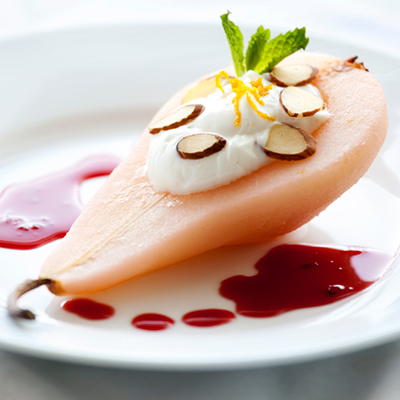- Strawberries
- Cook With Apples
- Grapes
- Grapefruit
- Lemons
- Cabbage
- Asparagus
- All About Bulb Vegetables
- All About Cruciferous Vegetables
- Squash
- All About Root Vegetables
- The Gift of Spice
- Thyme
- Basil
- Raspberries
- All About Tuber Vegetables
- Marjoram / Oregano
- Lemongrass / Citronella
- All Our Fruits, Vegetables and Fresh Herbs
- All About Exotic Fruits
- All About Legumes
- Cooking Pears: Three Inspirational Methods
Mint

This aromatic plant native to the Mediterranean basin has been cultivated for thousands of years. Mint is a hardy perennial that spreads very quickly, overwhelming gardens. Of the 25 different varieties of mint, peppermint and spearmint are by far the most popular because of their unique, strong, cool and refreshing aroma.
Culinary tips and advice
- Fresh or dried, mint imparts great flavour to soups, meats, game and fish, as well as certain vegetables such as eggplant, cucumber, peas and tomatoes.
- On the dessert menu, you’ll find mint accompanying strawberries, citrus, watermelon and chocolate.
- Mint is excellent in ices, ice cream, curries, chutneys, yogurts and of course tea.
- The English enjoy mint jelly with lamb, while the Vietnamese wrap their spring rolls in mint leaves and the Lebanese use it to make their traditional tabouleh.
Expert Tip
Because of its strong flavour, mint should not be mixed with other herbs and spices.
Storage Life
Fresh mint can be stored in the refrigerator for a few days. To extend the life of the leaves, place the stems in a container of water in the fridge, and cover the leaves with a small plastic bag. Dried mint will retain its flavour for up to two years stored in an air-tight opaque container stored in a cool, dry place.














